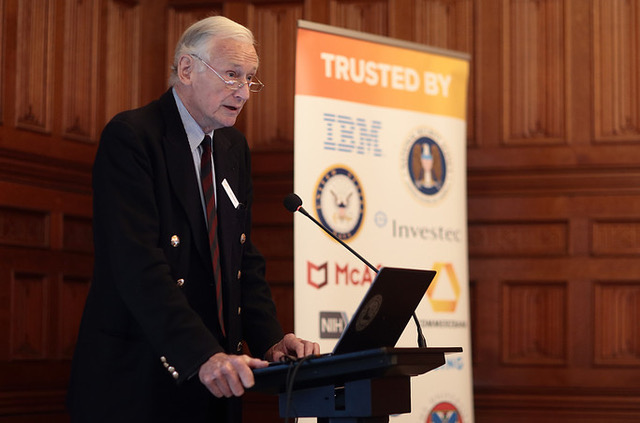June 6-7, 2018 THE HOME OF THE CONNECTED CAR CONFERENCE AND EXPO Michigan, USA
———————
REPORT
Keeping Entertained in the Autonomous Vehicle
By Graham Jarvis
BIS Automotive predicted in a report that the global in-vehicle entertainment market will reach a total market value of $52.2bn by 2022. The report, ‘Global In-Vehicle Infotainment Market, Analysis and Forecast 2017-2022’, was announced in a BIS Research press release on 4th May 2017 and claims that the compound annual growth rate (CAGR) will be 7.5% during this period.
Much of this growth depends on the ability of the players within the ecosystem to shift consumer connectivity preferences and requirements. It says there is also a need to address safety concerns, to offer improve offerings at an affordable price to ensure that growth within the market continues unabated. OEMs – vehicle manufacturers – are therefore working on gradual technological offerings in a bid to establish market share in the established automotive markets. In-vehicle infotainment systems are one ‘innovation’ that they are keen to promote and to establish.
The release claims that infotainment systems are gaining in popularity, owing to the fact that they can offer consumers access to new kinds of entertainment and informational content. The involvement of non-core players within the infotainment ecosystem, such as semiconductor companies, software developers, and solutions providers has also “facilitated the development of improved features.” Consequently, they have helped to stimulate the popularity of infotainment systems in all types of vehicle. Furthermore, it is generally predicted that demand will increase with autonomous vehicles.
Fifth screen
Meanwhile, Futurescope Consulting, says trade show CES 2018 will demonstrate advances in LIDAR and other supporting autonomous driving technologies. In addition to these technologies, the show will demonstrate advances of in-car experiences that are increasingly being enabled by improvements in connectivity, sensor technology, AI and voice controlled systems in cars. Interestingly, the consulting firm notes that 30% of new cars were sold with SIM connectivity in 2017. Moreover, the car is expected to become the 5th screen with the ability to produce appropriate and timely content.
James Manning Smith, a research analyst at Futurescope, explains: “With autonomous driving technologies set to make the car the next living room, entertainment companies are exploring new technology and services to entertain passengers”.
“Once level 4 or 5 autonomous driving technologies are perfected and accepted by consumers, key differentiators such as in-car choice will become the entertainment experience, over the driving experience. This provides an opportunity for audio and entertainment companies to innovate bringing more immersive entertainment technology to the car, whilst car manufacturers are challenged to stay competitive bringing the right entertainment technology to the cockpit.”
Damien Scott, Chief Commercial Officer at Renovo.auto adds: “Systems like CarPlay, Android Auto and Microsoft Sync have helped to bring that content into the vehicle systems – primarily audio. The next phase will be to exploit content capabilities that are unique to the vehicle more directly, and in particular around visual content. So, in highly automated vehicles, it will be possible to have the passenger experience designed around a large screen.”
“This has the potential to bring more visual content from the smartphone to vehicle screens. Initially, systems like Apple AirPlay and Google Casting will enable the smartphone as the primary content originator for such screens. As the vehicles mature greater use of native storage and content will be used. For example, the pre-loading of popular content onto the vehicle by anticipating consumer demand.”
Changing habits
Martyn Whistler, Lead Analyst for Media and Entertainment at EY finds that there are several factors that will drive connected cars are over the forthcoming years. For example, will people commute to work in the future? “In the UK the number of people taking driving tests is down, [and this] is illustrative of changing attitudes towards driving and vehicle ownership. He therefore predicts an increase in ride-sharing, car-sharing and fleet schemes. Ford, for example, is experimenting with car fleets, and there are plans afoot for Uber to buy fleet of 24,000 self-driving XC90 SUV between 2019 and 2021. He therefore believes that companies like these will drive changes in attitude.
He adds: “If you still want to drive you could rent a car by the hour or in a minute, meaning that you won’t need to invest in large amounts of capital to buy one. This will stimulate the types of innovation. The other angle is around regulation. If autonomous vehicles are generally safer you will see a push from regulators (based on the claims that they safer), you might see a push by consumers for the adoption of this technology, and far quicker than it is currently proposed. Inevitably it becomes cheaper and more effective.”
Beyond driving
This nevertheless leaves, in his opinion, a big question mark hanging over media and entertainment. “We did some research focusing on the US, and we asked the question: If everyone was driving autonomous vehicles tomorrow, what would be the incremental time – which would allow people to do other things with their time, other than driving?” With increasing levels of autonomous driving, even the ‘driver’ may want to find other ways to occupy his time. The other ‘passengers’ within the vehicle may want to much the same too.
In response to these questions EY’s study estimated that there would potentially be 22bn hours of extra media consumption, over and above what is consumed today. This leaves the questions of what people are going to do with the extra time they gain, and what kinds of media consumption are likely to be required. “People are taking their existing media services such as Spotify or Netflix and putting them into the car, so they aren’t paying for anything new and so there is no incremental increase in revenue”, he explains.
He then asks: “So how do you change this?” The answer perhaps falls on the ability of either the OEMS, media companies, tech or telco companies to create new experiences. He responds by saying: “You could have new screens in the car, or use augmented reality as the car drives along. Those kinds of changes require a re-think of the technologies in the car and how the car is designed. What we are seeing now is a manoeuvring of technology and car companies to see who will be responsible for those kinds of services in the car.”
EY’s report, ‘Can Driverless Cars Be The Destination?’ suggests that “car interiors will increasingly integrate entertainment elements with designs that function as communal living rooms on wheels”, and it believes that “car designers and automakers will leverage a mix of technology to create connected interiors and driverless living spaces.” These will include augmented reality, human- machine interfaces (HMI), integrated multi-media immersion (built in and brought into the vehicle)”.
Entertainment infancy
Robert Guest, VP of Product Management at Access Europe, comments that entertainment in cars is still in its infancy. He highlights that there are some legal cross-border hurdles to overcome too. In fact he believes the barriers to the growth of in-car infotainment in connected and autonomous vehicles relates more to licensing that technology.
“Automotive companies don’t have business models to cope with the licensing of cross-border content. So, if you are happily driving in Holland and you cross the border, the content stops. This will cause much frustration, but it is down to legal issues – the so-called Portability of online content included in the ‘European Digital Single Market’, and not a technical one.”
Level 4 growth
Despite these issues, Scott thinks: “The arrival of SAE Level 4 automated vehicles will result in the exponential growth in potential consumer experiences. With the arrival of this level of automation the former driver becomes a passenger and full consumer without concern for distraction from the driving task. The absence of human responsibility for the driving function also means that the design of experiences can vary and improve dramatically with the relaxation of the requirement to support a driver executing the driving function safely.”
Given current legislation on the use of mobiles while driving, autonomous driving may require a change in legislation to address when, for example, in-car video content may be watched. Guest explains: “The streaming of content will become bigger and be driven by autonomous vehicles – even if you are still able to take your eyes off the steering wheel, there is the question at what point will you be able to watch live sports coverage. It’s not a technology problem, but a legal problem: Are the drivers allowed to take their eyes of the road to consume content?” He therefore thinks that once this question is legally solved, the situation will be very different for entertainment service providers.
Streamlining content
With regards to the streamlining of content, Guest says there will be two things to consider: “There are two things. In-car entertainment will basically become the automotive equivalent of the TV operators, with the aggregation of content from various sources. There needs to be a unified way to aggregate the content, to discover it and to streamline it within the vehicle. In addition to having multiple sources to condone with, we will all be bringing our own devices to the mix.”
However, he notes: “The portability rules are an integral part of the European Union’s Digital Single Market policy, which aims at enabling consumers across all 27 member countries to access the content they have subscribed to freely and securely from one country to another – effectively breaking the borders that still remain when dealing with content rights. This European specificity will be put in place in April 2018.”
“To ensure that the in-car experience is unified, we will need to rely on technologies inherited from the connected entertainment world, such as UPnP (Universal Plug and Play), a technology standard which allows you to walk into a car and connect to different devices within the vehicle, and to understand what content is available for consumption (once IVI becomes a part of the vehicle entertainment system). This all has to be based on standards to simplify interoperability.”
Whistler believes that every vehicle is going to be connected, but it’s not clear as to whether “you need to plug in or use existing connected devices is not clear. Having Wi-Fi connected within a car is technology that’s available today, so there are no barriers to having a 3G, 4G or 5G connected car. What will be interesting would be the services. Traditional cars have had the radio, but the future may require something that we can interact with – such as games we could play.”
Yet the options for growth are currently in his view limited because Level 1, 2, 3 and 4 connected and semi-autonomous cars still require a driver. Level 5 of autonomy will change this, allowing new experiences to be created because the driver will in effect become another passenger. He says Level 5 goes hand-in-hand with autonomous driving, but warns that connectivity isn’t enough. You’ve got to have the data processing capabilities within the car too. “If you look at technologies such as Virtual Reality, the kind of processing power required for true VR is above what is available on most laptops today but that might not be the case in the autonomous car where processing power will be exponentially greater”, he says. So, in his view Level 5 will be a game-changer.
Forming partnerships
With eyes on the future, Scott says partnerships are being formed: “Beyond streaming services, partnerships are being formed to create new infotainment services for the highly automated vehicle era. One such example is the partnership my company Renovo.auto struck with INRIX to both take advantage of data being generated by the vehicles and to explore how INRIX OpenCar can present a new range of infotainment services to passengers in highly automated vehicles.”
Whistler adds: “So, many of the car manufacturers are doing deals with Apple, Google and all of the tech companies. Nissan, this week at CES, is offering ‘Brain to vehicle’ technology. This is designed to control the car, but it could be used to control the media experiences as well instead of voice control. Voice control is a big part of what most companies are rolling out. The end state is continually evolving and changing. So, it’s difficult for car manufacturers to work out where you’re going to in terms of media technology development.”
For example, he says Disney is selling its US radio stations because it doesn’t see radio as the future of in-car entertainment. Some media companies are questioning the future of radio as in-car entertainment. They are wondering whether video music streaming and gaming are its future.” Yet Guest doesn’t think that there will be a huge paradigm shift. Most of the content will still be audio- focused for the meantime. Still, he thinks forecasts that “cars will become a gateway to content steaming, but after that we will see some video services. However, they aren’t likely to be launched within the next 12-18 months as the development cycle is much longer than that.”
Meanwhile, a notable partnership is being formed by Intel and Warner Bros. Advertisers, game developers, car manufacturers, telcos, Hollywood, and many others are jumping aboard with an eye on future revenue opportunities. Autonomous vehicles are being seen as a new kind of consumer space by Intel’s CEO, Brian Krzanich, and the Hollywood Report notes that some analysts are predicting the in-car streaming entertainment will offer $200bn per year in extra revenue. Much of that revenue will come from getting the consumer to sign up to premium streaming services. Apps and online services will contribute to this revenue, and yet data volumes may become very challenging.
Data challenges
Hitachi claims that connected cars will send 25 gigabytes to the cloud every hour. Now that’s a lot of data to handle. Growing data volumes will become an increasing challenge in highly automated and connected vehicles”, says Scott. He believes this challenge is bi-directional.
He adds: “There will be increasing demands for passenger content and services such as films, TV shows, music, video calling and gaming. At the same time the vehicle itself will be generating substantial amounts of data from its external and internal sensors. This vehicle generated data will be valuable to a range of potential stakeholders including the automated driving system developers, vehicle designers, survey companies, municipalities seeking to characterise their roads and many more.”
He therefore thinks there will need to be some “cost effective intelligent orchestration of this bi- directional data deluge will require new systems that use AI to optimize and prioritize across a range of transfer mechanisms.”
David Trossell, CEO and CTO of Bridgeworks, concludes that with greater data volumes there is going to have to be a re-think about the delivery of data. This will require the use of artificial intelligence, data caching, the right infrastructure and data acceleration solutions such as PORTrockIT to mitigate the impact of network latency, data latency and packet loss. With such an approach it becomes possible to maximise the efficiency of the network. This will make data analysis more effective, and permit improved content streaming with reduced buffering to keep people entertained in their connected, semi-autonomous and eventually in their autonomous vehicles.





